16th Abril 2021 – Shabbat is almost here
And today we’ll listen to Shoshana Damari with a Bedouin song, remembering her visit to the detention camps in Cyprus.
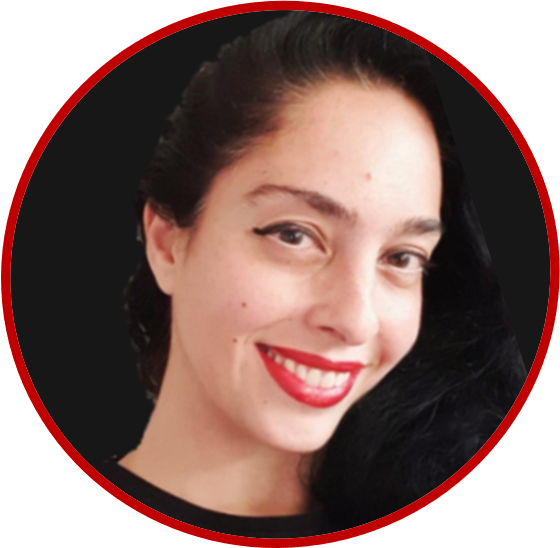 Hello, how are you? Have you ever been to Cyprus? I have, once. It was at the end of June and beginning of July. I love the hot weather and one of the moments I enjoyed the most there was walking alone for a couple of kilometres to the outskirts of Nicosia to a supermarket at midday, to buy the food for my music band (Vigüela, by the way).
Hello, how are you? Have you ever been to Cyprus? I have, once. It was at the end of June and beginning of July. I love the hot weather and one of the moments I enjoyed the most there was walking alone for a couple of kilometres to the outskirts of Nicosia to a supermarket at midday, to buy the food for my music band (Vigüela, by the way).
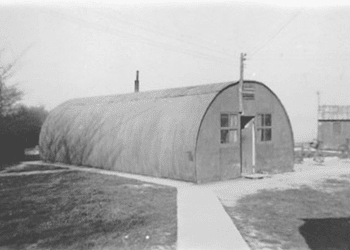 Obviously, it is not the same to walk around in the sun and then return to a beautiful mansion with a patio, running water and all the comforts, as it is to be detained in Cyprus and your “home” is a tin Nissen hut ? without even without electricity. I can just imagine how hot it can get in there on a day like that…
Obviously, it is not the same to walk around in the sun and then return to a beautiful mansion with a patio, running water and all the comforts, as it is to be detained in Cyprus and your “home” is a tin Nissen hut ? without even without electricity. I can just imagine how hot it can get in there on a day like that…
This picture is from the website of Nissen and it is really interesting.
But why am I telling you all this? Well, the day before yesterday was the anniversary of the creation of the State of Israel, as I’m sure you know. It was the 14th of May 1948. But before that, between the end of the Second World War and the creation of the State, a lot of things happened.
For example, a very large number of Jewish survivors of the Holocaust emigrated without having their legal issues resolved, to settle in Eretz Israel. To the British authorities, they were illegal immigrants. I think it is very important to remember these facts.
Unfortunately, this situation continues to be repeated with different peoples in many parts of the world. Well, these Jews, survivors of the absolute horror, many of them orphaned children, were detained in camps in Cyprus. Surely you are beginning to understand the mention of the tin Nissen hut. Read on to find out more about these facts and also, of course, to listen to some music. Because don’t forget, this is Music Before Shabbat!
| Share the joy of music and learning with your beloved ones. Share MBS. Thank you in advance. |
| Share this with a friend, right from here |
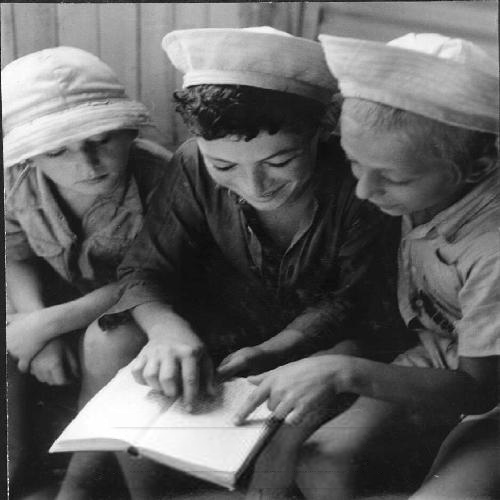
.
About the detention camps in Cyprus
The Holocaust Museum, with its Encyclopedia, is a very nice source of information, In a perfect balance between ease of reading and depth of data. The entry about the detentions camps in Cyprus is here. I will summarise some key facts and the pictures are of Public Domain, available in Commons of wikimedia.org:
- Between August 1946 and May 1948, the British government intercepted more than 50,000 Holocaust survivors seeking to resettle in Palestine. They interned these survivors in detention camps established on the Mediterranean island of Cyprus.
- Many had fled from Eastern Europe or the Soviet Union with the help of the underground Brihah movement.
- Approximately 80 percent were aged 12 to 35, while 8,000 were between the ages of 12 and 18. The majority were orphans.
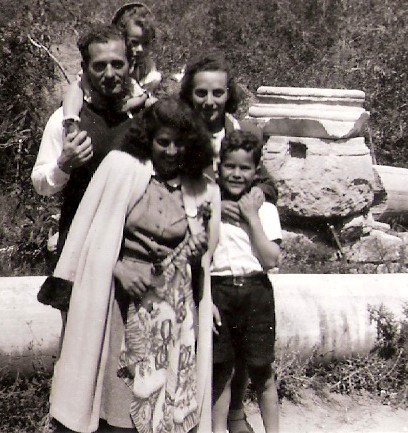 Despite the diverse political movements represented in the camps, the internees established a joint movement structure to represent their needs before the authorities.
Despite the diverse political movements represented in the camps, the internees established a joint movement structure to represent their needs before the authorities.- There were two types of refugee camps: five summer camps where the detainees were housed in tents, and seven winter camps, where housing consisted of tin Nissen huts and some tents. No electric lighting, limited access to water, bad food, and poor sanitary conditions.
- There was a huge overcrowding and they were surrounded by barbed wire.
- The last camp closed in February of 1949.

Before I continue, I would like to share with you this video with the statements of Avraham Aviel, who was detained there and tells his experience. I warn you that I couldn’t help crying, but mostly out of joy.
I imagine that with so many young people trying to rebuild their lives, there would be a lot of new couples. Well, I don’t think it’s my imagination… There were 2000 babies born in those camps, that were quite real ?
Do you want to read much more details about the detention camps, check the work Jewish survivors and detention camps in Cyprus after the Second World War, by Ulvi Keser, for the Journal Of Modern Turkish History Studies XIII/26 (2013-Bahar/Spring), ss. 105-138, (available here). This is just a part of the very teasing abstract:
“Cyprus has had actually very tremendous role in Jewish history unparalleled by any country in the world than Israel herself. Taking such a reality into consideration, as either a stopping-off point located in the very midst of the Mediterranean route to dispersion or a stepping stone to Jewish homeland, Cypriots and the Jewish people due to a good many reasons have enjoyed a unique relationship even if it hasn’t always had a happy ending.”
There is another video I would like to share, recorded in 1998, on the occasion of the Keren Hayesod annual conference in Cyprus. This one is a bit longer, but very interesting, not only for the statements of those who appear (people who were detained there, a teacher sent by the British to teach in the camps, a woman who worked as a nurse there, younger people who are also moved by this story…), but also for the images. They show starving, extremely thin people. Also images of struggle but also of hope. At 7:21 may he be Shmuel Katz? The famous artist, illustrator, and cartoonist who lived until 2010, was detained there. If you want to see pictures, I recommend you with all of my heart to visit the gallery of the Archives of the American Jewish Joint Distribution Committee. Just as an example (and the video is under this pictures):

This video is from the Spielberg Jewish Film Archive, in which “The 500 films, selected for the virtual cinema, reflect the vast scope of documentary material collected in the Spielberg Archive. The films range from 1911 to the present and include home movies, short films and full length features.” The Archive is here.
| Share this with a friend, right from here |
About the artist!
Shoshana Damari had settled with her family in Palestine in 1923, when she was 2 years old. So at the time of the detention camps she was in the middle or her 20s. She was our protagonist in this previous edition, where we met her and Moshe Wilensky. They both visited the camps in Cyprus at some moment in 1947 or 1948.
This picture is of public domain and I found it here.
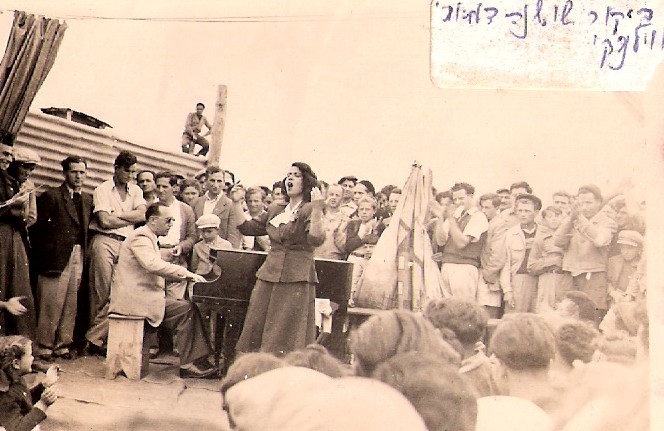
About the song!
Click the picture to listen to Dakhl Ayounik Hakina by Shoshana Damari:
Shabbat Shalom.
Araceli Tzigane | Mapamundi Música
